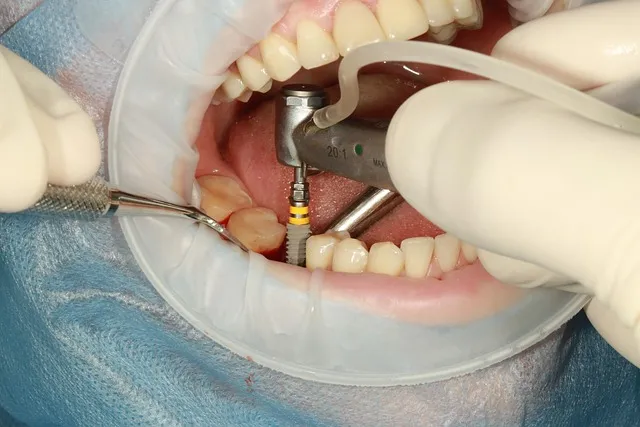One of the most popular dental procedures is a filling. It is a repair job to heal the damage caused by tooth decay. It's usually a quick and painless process that lasts around an hour.
Cavities are prevalent these days. Based on the World Health Organization, untreated cavities are the most frequent dental problem in the world, affecting about 2 billion people who have permanent teeth (adults).
A filling prevents future decay and lets your tooth usually operate. Usually, people are concerned about how long fillings take for the cavity.
A cavity filling can usually be completed in 20-30 minutes for a small cavity. Larger cavities or those in more difficult-to-reach locations may take longer, perhaps up to an hour.
Continue reading to discover more about what to expect if you require a filling, the most often-used materials, and how long fillings take to fix and heal.
What does filling mean?
A filling is a method of restoring a decayed tooth to its proper function and shape. A filling is applied by a dentist who first removes the decaying tooth material, wants to clean the afflicted region, and then fills the cleaned-output cavity with a filling substance. A filling prevents further degradation by blocking up areas where bacteria can enter. Filling materials include gold, porcelain, composite resin (tooth-colored fillings), and amalgam (an alloy of silver, copper, mercury, tin, and sometimes zinc).What to Expect During the Filling Procedure?
Cavities are extremely simple for dentists to repair. First, dentists numb the area of the mouth that will be treated with a local anesthetic, such as lidocaine. This anesthetic is injected into the gums, causing a brief stinging sensation. The dentist will begin the procedure once the area is completely numb. The dentist will then use a tooth drill or laser to extract decay from the tooth. After the deterioration is removed, the area must be prepared for filling. The surgeon will shape the region and, based on the type of fillings used, may use an acid gel to etch the tooth. The dentist will apply the cement after the tooth has been prepped. Some filler materials must be hardened using a specialized light. If you have this sort of filling, the doctor will flash a strong light on it multiple times throughout the treatment. Finally, the filling will be polished by the dentist. This procedure helps to smooth the fillings and reduces sharp corners that could harm your tongue or cheek lining.How long do fillings take?
The length of time it takes to have a filling depends on the filling material used and the location and size of the cavity. A filling can usually be completed in 20-30 minutes for a small cavity. Larger cavities or those in more difficult-to-reach locations may take longer, perhaps up to an hour. If you have a filling placed in a molar, it may take longer because the molars are larger and have more complex anatomy. Since a filling is a popular and concise treatment, it takes little time to execute. A standard filling technique takes around an hour. If you have multiple fillings that must be treated, your dentist may schedule multiple appointments to fix them. You may suffer pain or tooth sensitivity after obtaining a fill in one of your teeth. This can linger for hours or even days following the surgery. Avoid meals and drinks that can cause sensitivity, such as extremely hot and cold beverages, sweet foods, and fizzy drinks. Consult your dentist if the discomfort persists or if the soreness worsens. Some fillings require time to completely set. Sticky or firm foods can often dislodge a fresh filling that hasn't entirely hardened, so only eat them once it has hardened. Discuss with your dentist how long you must wait to avoid damaging your filling. The edges may be sharp even after the dentist has polished the fillings. They may be imperceptible at first because of the anesthesia, but they can be uncomfortable once the numbness wears off. Inform your dentist if your recent filling seems rough so it can be repaired. Read Also: Tooth fillings before and after: 7 things to considerHow can we Prevent Cavities?
Remember to maintain proper oral hygiene practices to avoid cavities. Brush your teeth two times a day and polish them once a day. This regimen aids in the removal of plaques and food particles which can cause the growth of cavities. Because cavities will cause bacteria to feed on sweets, eliminating candy and drinks can also be beneficial. Regular dental visits are critical, so pay attention to your yearly checkups. These visits allow your dentist and dental hygienist to thoroughly clean and inspect your teeth for cavities. If a cavity is not treated, the decay may spread and require more thorough treatment. While having a cavity is not enjoyable, the procedure only takes almost an hour, and don't put it off.How long does it take for a filling to heal?
The majority of fillings heal promptly and without issues. Your teeth will seem a little sensitive when the anesthesia wears off, but this normally goes away after a day or so. Metal fillings, including amalgam and gold, can occasionally cause post-op cold intolerance for several weeks or even days. With solid composites or glass ionomer filling, this is less common but still conceivable. You can lessen tooth sensitivity by doing the following:- Chewing on the opposite side of the mouth for a few days.
- Brushing and flossing around the filling more lightly than normal.
- Avoid cold or hot food or beverages.
- Avoiding foods high in acid.
- Using desensitizing toothpaste.
- Taking nonsteroidal anti-inflammatory medication.
How long does it take for a filling to stop hurting?
It may take some time for any remaining pain to disappear once your filling is finished. You may have a dull pain just at the area of the dental treatment over several hours after leaving the dentist. It can also take 2 to 7 hours for such anesthetic to wear off fully. As the anesthesia goes off, you may experience an unpleasant "pins and needles" sensation as the nerves restore full function. You may take this over pain medicine (such as ibuprofen) if the discomfort is unbearable. You can also apply mild heat or a cold pack outside your jawline to reduce swelling and pain.How long do dental fillings last?
Your oral hygiene plays a role as far as how long the filling lasts. Careful dental treatment can prolong the lifespan of the filling and prevent the formation of a new cavity on your tooth. A filling's lifetime can also vary based on the materials utilized. Since everyone's teeth and lifestyles are unique, these periods may differ from one individual to another. Usually:- Amalgam fillings have a lifespan of 5 to 25 years.
- Composite fillings have a lifespan of 5 to 15 years.
- Gold fillings have a lifespan of 15 to 20 years.
What is the best way to tell whether you require a filling?
Regular checkups with your dentist will detect cavities early. The sooner you treat a cavity, the better the results for your teeth and the less painful the treatment will be. So getting regular dental checkups is a wise investment. A cavity usually has certain warning indications, such as:- Sensitive teeth to cold or hot foods and beverages.
- Sensitivity to sweetened foods and beverages.
- The continuous discomfort of a tooth.
- A crack or gap in a tooth.
- A tooth stain, whether white or dark.
Conclusion -
Dental fillings are quite common and usually very uncomfortable. A regular, easy filling usually takes around an hour. Inquire with the dentist about the advantages and disadvantages of various fillers for your teeth. They can also advise you on the best ways to maintain your filling. Check your dental insurance policy to determine which types of treatments are covered. Your insurance might not cover more expensive materials. You should expect dental fillings to last many years if you practice good dental hygiene.
Reviewed by







